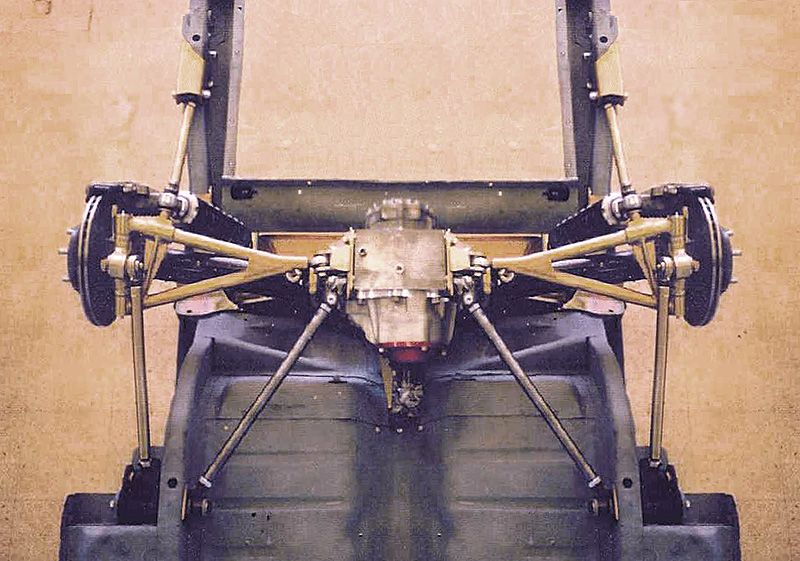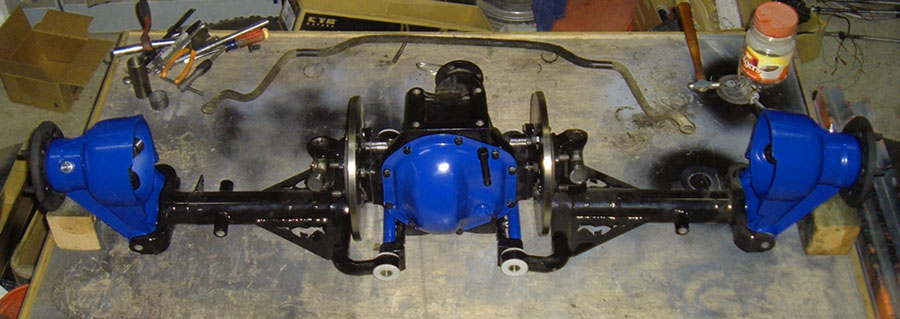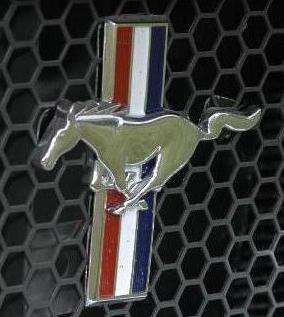

 |
 |
 |
 |
 |
You are not logged in. Would you like to login?

![]() Offline
Offline
Wow - don't I wish. Found this nice condensed version of Carroll Smiths guides;
Help yourselves! BTW - You'll note its from a BRIT's site, kerbs, tyres, centre - etc.
Setting up the Suspension
CARROLL SMITH’S CAUSE AND EFFECT GUIDE
RIDE AND ROLL RESISTANCE-SPRING
Too much spring: overall
• Harsh and choppy ride
• Much unprovoked sliding
• Car will not put power down on corner exit – excessive wheel-spin
Relatively too much spring: front
• Understeer – although the car may initially point in well
• Front breaks loose over bumps in corners
• Front tyres lock while braking over bumps
Relatively too much spring: rear
• Oversteer immediately on application of power
• Excessive wheel-spin
Too little spring: overall
• Car contacts the track a lot
• Floating ride with excess vertical chassis movement, pitch and roll
• Sloppy and inconsistent response
• Car slow to take a set – may take more than one
Relatively too little spring: rear
• Excessive squat on acceleration accompanied by excessive rear negative camber, leading to oversteer and poor power down characteristics
• Tendency to fall over on outside rear tyre and ‘flop’ into oversteer and wheel-spin
ANTI-ROLL BARS
Too much anti-roll bar: overall
• Car will be very sudden in response and will have little feel
• Car will tend to slide or skate rather than taking a set – especially in slow and medium speed corners
• Car may dart over one wheel or diagonal bumps
Relatively too much anti-roll bar: front
• Corner entry understeer which usually becomes progressively worse as the driver tries to tighten the corner radius.
Relatively too much anti-roll bar: rear
• If the imbalance is extreme can cause corner entry oversteer
• Corner exit oversteer. Car won’t put down power but goes directly to oversteer due to inside wheel-spin
• Excessive sliding on corner exit
• Car has a violent reaction to major bumps and may be upset by ‘FIA’ kerbs
Too little anti-roll bar: overall
• Car is lazy in response, generally sloppy
• Car is reluctant to change direction in chicane and esses
Relatively too little anti-roll bar: front
• Car ‘falls over’ onto outside tyre on corner entry and then washes out into understeer
• Car is lazy in direction changes
Relatively too little anti-roll: rear
• My own opinion is that on most road courses a rear anti-roll bar is a bad thing. Anti-roll bars transfer lateral load from the unladen tyre to the laden tyre – exactly what we don’t want at the rear. I would much rather use enough spring to support the rear of the car. The exception comes when there are ‘washboard ripples’ at corner exits, as on street circuits and poorly paved road circuits.
SHOCK ABSORBER FORCES
Too much shock: overall
• A very sudden car with harsh ride qualities, much sliding and wheel patter
• Car will not absorb road surface irregularities but crashes over them
Too much rebound force
• Wheels do not return quickly to road surface after displacement. Inside wheel in a corner may be pulled off the road by the damper while still loaded
• Car may ‘jack down’ over bumps or in long corners causing a loss of tyre compliance. Car does not power down well at exit of corners when road surface is not extremely smooth
Too much bump force: general
• Harsh reaction to road surface irregularities.
• Car slides rather than sticking
• Car doesn’t put power down well - driving wheels hop.
Too much low piston speed bump force
• Car’s reaction to steering input too sudden
• Car’s reaction to lateral and longitudinal load transfer too harsh
Too much high piston speed bump force
• Car’s reaction to minor road surface irregularities too harsh – tyres hop over ‘chatter bumps’ and ripples in braking areas and corner exits.
Too little shock: overall
• Car floats a lot (the Cadillac ride syndrome) and oscillates after bumps
• Car dives and squats a lot
• Car rolls quickly in response to lateral acceleration and may tend to ‘fall over’ onto the outside front tyre during corner entry and outside rear tyre on corner exit.
• Car is generally sloppy and unresponsive
Too little rebound force: overall
• Car floats – oscillates after bumps (the Cadillac ride syndrome)
Too little bump force: overall
• Initial turn in reaction soft and sloppy
• Excessive and quick roll, dive and squat
Too little low piston speed bump force
• Car is generally imprecise and sloppy in response to lateral (and, to a lesser extent longitudinal) accelerations and to driver steering inputs
Too little high piston speed bump force
• Suspension may bottom over the largest bumps on the track resulting in momentary loss of tyre contact and excessive instantaneous loads on suspension and chassis
Dead shock on one corner
• A dead shock is surprisingly difficult for a driver to identify and/or isolate
• At the rear, that car will ‘fall over’ onto the outside tyre and oversteer in one direction only
• At the front, the car will ‘fall over’ onto the outside tyre on corner entry and then understeer.
WHEEL ALIGNMENT
Front toe-in: too much
• Car darts over bumps, under heavy braking and during corner entry – is generally unstable
• Car won’t point into corners, or if extreme. May point in very quickly and then dart and wash out
Front toe-out: too much
• Car wanders under heavy braking and may be somewhat unstable in a straight line, especially in response to single wheel or diagonal bumps and/or wind gusts
• Car may point into corners and then refuse to take a set
• If extreme will cause understeer tyre drag in long corners
Rear toe-in: too little
• Power on oversteer during corner exit
Rear toe-in: too much
• Rear feels light and unstable during corner entry. Car slides through corners rather than rolling freely
Rear toe-our: any
• Power oversteer during corner exit and (maybe) in a straight line
• Straight line instability
Front wheel caster or trail: too little
• Car too sensitive (twitchy?)
• Too little steering feel and feedback
Front wheel caster or trail: too much
• Excessive physical steering effort accompanied by too much self return action and transmittal of road shocks to the drivers hands
• General lack of sensitivity to steering input due to excessive force required
Front wheel caster or trail: uneven
• Steering effort is harder in one direction than in the other
• Car will ‘pull’ towards the side with less caster – good on ovals, bad on road courses
Camber: too much negative
• Inside of tyre excessively hot and/or wearing too rapidly. At the front this will show up as reduced braking capability and at the rear as reduced acceleration capability. Depending on the racetrack and the characteristics of the individual tyre, inside temperature should be 10°-25° hotter than the outside. Use a real pyrometer with a needle rather than an infra red surface temperature device.
Camber: not enough negative
• Outside of tyre will be hot and wearing. This should never be and is almost always caused by running static positive camber at the rear in an effort to avoid the generation of excessive negative camber under the influence of aero download at high speed.
• A better solution is improved geometry and increased spring rate. Dynamic positive camber will always degrade rear tyre performance and if extreme, can cause braking instability and/or corner exit oversteer.
Bump steer, front: too much toe-in in bump
• Car darts over bumps and understeers on corner entry
Bump steer, front: too much toe-out in bump
• Car wanders under brakes and may dart over one wheel or diagonal bumps
• Car may understeer after initial turn in
Bump steer, rear: too much toe-in in bump (same as solid axle steer on outside wheel)
• Roll understeer on corner entry
• Mid phase corner understeer
• ‘Tiptoe’ instability when trail braking
• Darting on power application on corner exit
Bump steer, rear: too much toe-out in bump (same as solid axle steer on outside wheel)
• Instability on acceleration
• Good turn in followed by a tendency to oversteer at mid-phase and exit
TYRES
Too much tyre pressure
• Harsh ride, excessive wheel patter, sliding and wheel-spin
• High temperature reading and wear at the centre of the tyre
Too little tyre pressure
• Soft and mushy response
• Reduced footprint area and reduced traction
• High temperatures with a dip in the centre of the tread
Front tyres ‘going off’
• Gradually increasing understeer – Enter corners slower, get on power earlier with less steering lock
Rear tyres ‘going off’
• Gradually increasing power on oversteer – Try to carry more speed through corner and be later and more gradual with power application
LIMITED SLIP MALADIES
Limited slip differential wearing out
• Initial symptoms are decreased power on understeer or increased power on oversteer and inside wheel spin. The car might be easier to drive, but it will be slow
• When wear becomes extreme, stability under hard acceleration from low speed will diminish and things will not be pleasant at all
Excessive cam or ramp angle on coast side plate (clutch pack) limited slip differential
• Corner entry, mid-phase and corner exit understeer. Incurable with geometry changes or rates – must change differential ramps. In 1998, virtually everyone is running 0/0 or 80/80 ramps.
SUSPENSION GEOMETRY
Excessive front scrub radius (steering offset)
• Excessive steering effort accompanied by imprecise and inconsistent ‘feel’ and feedback
Excessive roll centre lateral envelope: front or rear
• Non-linear response and feel to steering input and lateral ‘G’ (side force) generation
Rear roll centre too low (or front r/c relatively too high)
• Roll axis too far out of parallel with mass centroid axis, leading to non-linear generation of lateral load transfer and chassis roll as well as the generation of excessive front jacking force.
• Tendency will be towards understeer
Rear roll centre too high (or front r/c relatively too low)
• Opposite of above, tending towards excessive jacking at the rear and oversteer
Front track width too narrow relative to rear
• Car tends to ‘trip over its front feet’ during slow and medium speed corner entry, evidenced by lots of understeer (remember trying to turn your tricycle?)
• Crutch is to increase front ride rate and roll resistance and increase the camber curves in the direction of more negative camber in bump (usually by raising the front roll centre)
From A LOCOST 7 Site:
Cheers - Jim
![]() Offline
Offline

Great info. Thanks. I guess this means the stuff we did in the 70's like big wide tires in the back, jacking up the rear, lowering the front with skinny tires to narrow the track and clear the fenders, may have had adverse effects on handling?
![]() Offline
Offline

That's a keeper, one to be printed and kept in a familiar place. For easy access!
Ralphy
![]() Offline
Offline
It doesn't have the detail of his Engineer/Tune Up pocket guide -- but a really great summary.
Enjoy!
Jim